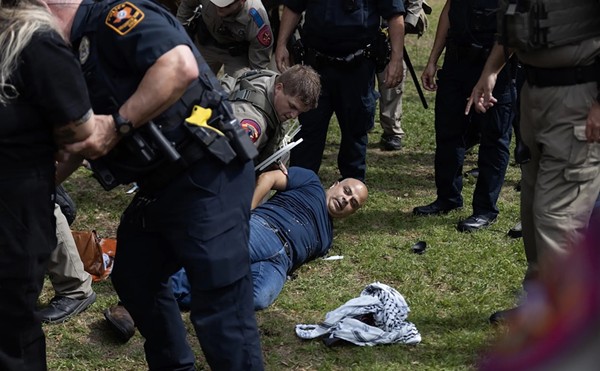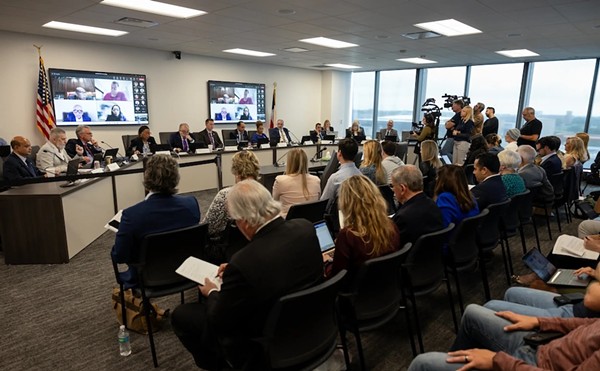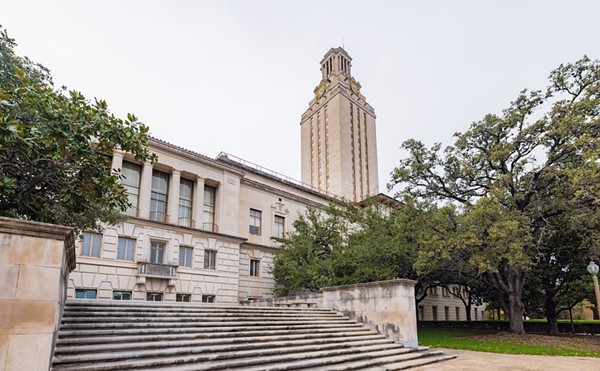Lifshutz can’t expect citizens to take his word that Big Tex is A-OK
Shot himself in the foot. His own worst enemy. Or, a recent favorite: Snatching defeat from the jaws of victory. Any of these clichés seem appropriate for the inexplicable behavior of downtown developer James Lifshutz, whose Big Tex mixed-use project has passed the Zoning Commission and could be headed for approval by City Council February 9 `see story, page 6`.
Unless, of course, Lifshutz alienates too many supporters and passive bystanders in the ensuing two weeks with his refusal to share the report that he claims shows Big Tex is asbestos-free.
Between 1963 and 1989, the Big Tex site, which lies on the banks of the San Antonio River just below Lifshutz’ Southtown Blue Star Arts Complex, processed approximately 104,000 tons of asbestos-laden vermiculite from a W.R. Grace mine in Libby, Montana. Libby’s asbestos was a particularly dangerous small-particle variety, tremolite, which easily becomes airborne to be inhaled into lungs where it becomes embedded in the lining. Hundreds of Libby residents and workers in former processing plants have sickened and died from asbestosis and related cancers.
| counterpoint our opinion |
After W.R. Grace/Texas Vermiculite, as the local plant was called, closed, the site was operated as Big Tex Grain Co., and it may be that the livestock fed by it consumed the asbestos that didn’t drift or float downstream on wind and water. But according to the U.S. Agency for Toxic Substances and Disease Registry, asbestos does not break down over time and does not dissolve or evaporate, meaning that it can lie in wait, like Camus’ Plague, taking to the air when it is disturbed — during construction, for instance.
A former W.R. Grace/Texas Vermiculite plant in Dallas is one of 28 sites that processed Libby vermiculite that currently is being evaluated by the ATSDR. Lifshutz’ property is not on the Phase I ATSDR list, and Lifshutz has cited this as further evidence that his site is safe. But the agency says that additional sites haven’t received a de facto clean bill of health — they will be evaluated later in the context of data gathered during Phase I.
The Dallas ATSDR report, released last September, found that that site posed no health hazard to the surrounding neighborhood — because it is closed to the public, so residents are unlikely to encounter remaining pockets of waste material. Lifshutz’ Big Tex development, on the other hand, would be open to construction workers and, eventually, residents and pedestrians.
Even if the Big Tex site is still contaminated with asbestos, it is in the community’s best interest for it to be cleaned up and redeveloped, and assistance is available for “innocent owners” to do just that. State and federal law allows the government to bill the former property owner, in this case W.R. Grace, which already is paying the legal and financial costs for Libby.
Lifshutz has told the Current that he is “one of the good guys,” and many of us are pleased with his vision for downtown development to date — I live in the Cadillac Lofts close to the El Tropicano Hotel, both Lifshutz developments — but with an issue as serious as asbestos contamination, he can’t expect us to take him at his word. If he wants public support for his project, he needs to be up-front with us, now. •
By Elaine Wolff

















